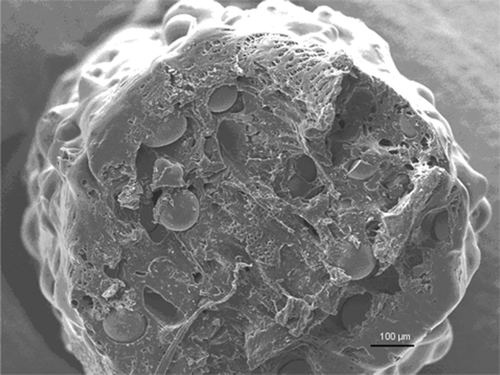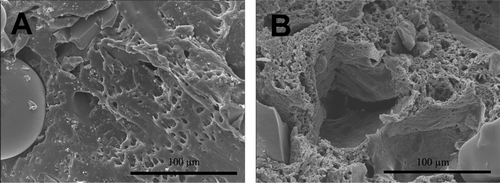Figures & data
Antimicrobial activity of ciprofloxacin released from the composite as a function of release time in vitro. The efficiency of unprocessed ciprofloxacin (control) is also shown. The values represent the lowest measured concentration (MIC) prohibiting bacterial growth of 5 standard ATCC strains
Figure 1. Release of ciprofloxacin from the pellets, expressed as a daily average release (μg/mL/day) and as a cumulative release (percentage of the total amount loaded in the pellets) as a function of in vitro immersion time in phosphate buffered solution.

Figure 2. SEM micrograph (100× magnification) of a composite microcylinder (pellet) at the start-up after melt-compounding. The PDLLA matrix mixed with bioactive glass microspheres showed microcavities and pores, which facilitated initial intrusion of fluid into the microstructure.

Figure 3. SEM micrographs (500× magnification) of composite microcylinders as a function of immersion time in phosphate buffer. Consecutive representative specimens from two time points: immediately after processing (A) and at day 49 of the immersion test (B). The cut surfaces of the implants, examined under SEM, showed that the PDLLA matrix developed microporosity during degradation and release of ciprofloxacin.
